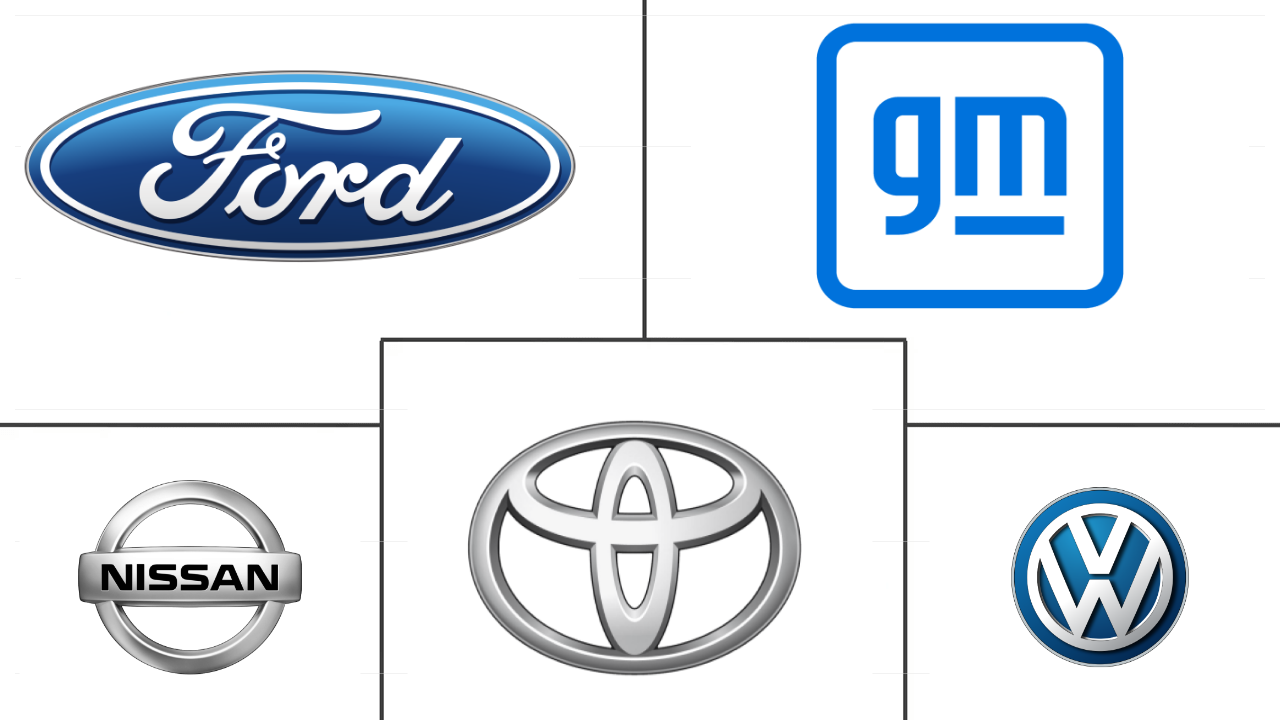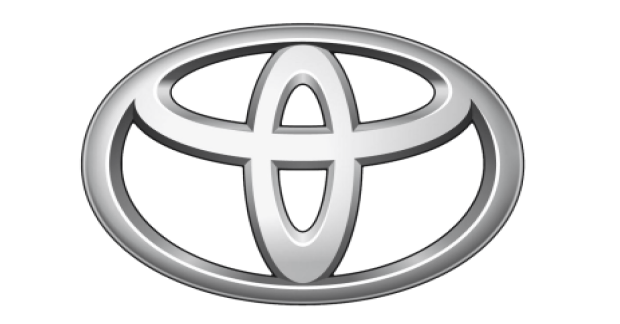Market Size of passenger cars Industry
|
|
Study Period | 2017 - 2030 |
|
|
Base Year For Estimation | 2023 |
|
|
Market Size (2024) | USD 2.43 Trillion |
|
|
Market Size (2030) | USD 4.1 Trillion |
|
|
Largest Share by Region | North America |
|
|
CAGR (2024 - 2030) | 9.10 % |
Major Players |
||

|
||
|
*Disclaimer: Major Players sorted in no particular order |
Passenger Cars Market Analysis
The Passenger Cars Market size is estimated at 2.43 trillion USD in 2024, and is expected to reach 4.1 trillion USD by 2030, growing at a CAGR of 9.10% during the forecast period (2024-2030).
2.43 Trillion
Market Size in 2024 (USD)
4.1 Trillion
Market Size in 2030 (USD)
2.08 %
CAGR (2017-2023)
9.10 %
CAGR (2024-2030)
Largest Segment by Fuel Type
56.57 %
value share, Gasoline, 2023
FCEVs are growing rapidly due to advancements in hydrogen technology, expanding hydrogen refueling infrastructure, and strong support for zero-emission vehicles.
Largest Country
57.45 %
value share, China, 2023
China leads the global passenger car market due to its large population, significant domestic manufacturing capacity, and strong consumer demand for a variety of vehicle types.
Largest Segment by Vehicle Body Type
55.22 %
value share, Sports Utility Vehicle, 2023
SUVs dominate due to their spaciousness, higher seating capacity, versatility, and increasing consumer preference for vehicles that offer comfort and utility.
Fastest-growing Segment by Fuel Category
34.58 %
Projected CAGR, FCEV, 2024-2030
FCEVs are the fastest-growing segment due to rapid advancements in hydrogen technology, increased investment in hydrogen infrastructure, and the global push towards zero-emission vehicles.
Leading Market Player
10.70 %
market share, Toyota Motor Corporation, 2023

Toyota dominates the passenger car market globally. The company's extensive network across the world and diverse product range have helped it claim the top spot.
Rising population, increasing spending power, and adoption of electric vehicles and hybrid technology are all expected to contribute to the growth of the passenger car market between 2024 and 2030
- The market for passenger cars is witnessing significant growth, primarily driven by the increasing demand from middle-income households and improving living standards in emerging economies. Additionally, the affordability of these vehicles is attracting consumers. Technological advancements, like the integration of all-EV charging stations with the Internet of Things (IoT) and real-time information solutions, have further fueled market expansion.
- Global governments have taken proactive measures to promote the adoption of electric vehicles (EVs). Notably, countries like China, India, France, and the United Kingdom have set targets to phase out petrol and diesel vehicles by 2040. Major industry players are ramping up production capacities, adhering to stringent emission norms (e.g., India's Bharat Stage 6), and countries like China, India, Japan, and South Korea have announced plans to ban the sales of new internal combustion engine (ICE) vehicles by 2040. These developments are driving the sales of passenger cars in the electromobility sector.
- Leading companies in the sector, including Ford Motor Company, Hyundai Motor Company, Nissan Motor Company Ltd, Toyota Motor Corporation, and Volkswagen AG, are bolstering their market presence through strategic moves like joint ventures, mergers, new product launches, and R&D. These automakers have committed a staggering USD 515 billion over the next five to ten years to develop and manufacture battery-powered vehicles, signaling a shift away from traditional combustion engines.
The global passenger car market is dynamically evolving, driven by shifts toward electric vehicles, technological innovations, and changing consumer behaviors
- The global passenger car market is undergoing significant transformations, driven by technological advancements, changing consumer preferences, and stringent environmental regulations. In recent years, there has been a marked shift toward electric vehicles, prompted by global efforts to reduce carbon emissions and the growing consumer awareness about sustainability. Governments worldwide are supporting this shift with incentives for EV purchases and investments in charging infrastructure, which are crucial for overcoming range anxiety among potential buyers. However, internal combustion engine vehicles still dominate the market in many regions, supported by improvements in fuel efficiency and emissions reductions.
- Economic factors play a pivotal role in shaping the passenger car market. The global economic slowdown and supply chain disruptions, initially sparked by the COVID-19 pandemic and exacerbated by geopolitical tensions, led to fluctuations in car sales. These disruptions have caused shortages in critical components such as semiconductors, impacting production rates and increasing vehicle prices.
- In the coming years, the passenger car market is expected to continue evolving, with innovations such as autonomous driving technologies, connected car features, and advanced safety systems becoming more prevalent. These features not only enhance the driving experience but also promise to improve road safety and reduce traffic congestion. Additionally, the rise of mobility-as-a-service (MaaS) is changing how people perceive vehicle ownership, potentially leading to decreased private car ownership in favor of shared transportation solutions.
Passenger Cars Industry Segmentation
Passenger Cars are covered as segments by Vehicle Configuration. Hybrid and Electric Vehicles, ICE are covered as segments by Propulsion Type. Asia-Pacific, Europe, North America, South America are covered as segments by Region.
- The market for passenger cars is witnessing significant growth, primarily driven by the increasing demand from middle-income households and improving living standards in emerging economies. Additionally, the affordability of these vehicles is attracting consumers. Technological advancements, like the integration of all-EV charging stations with the Internet of Things (IoT) and real-time information solutions, have further fueled market expansion.
- Global governments have taken proactive measures to promote the adoption of electric vehicles (EVs). Notably, countries like China, India, France, and the United Kingdom have set targets to phase out petrol and diesel vehicles by 2040. Major industry players are ramping up production capacities, adhering to stringent emission norms (e.g., India's Bharat Stage 6), and countries like China, India, Japan, and South Korea have announced plans to ban the sales of new internal combustion engine (ICE) vehicles by 2040. These developments are driving the sales of passenger cars in the electromobility sector.
- Leading companies in the sector, including Ford Motor Company, Hyundai Motor Company, Nissan Motor Company Ltd, Toyota Motor Corporation, and Volkswagen AG, are bolstering their market presence through strategic moves like joint ventures, mergers, new product launches, and R&D. These automakers have committed a staggering USD 515 billion over the next five to ten years to develop and manufacture battery-powered vehicles, signaling a shift away from traditional combustion engines.
| Vehicle Configuration | |||||
|
| Propulsion Type | ||||||||
| ||||||||
|
| Region | ||||||||||||
| ||||||||||||
| ||||||||||||
| ||||||||||||
|
Passenger Cars Market Size Summary
The passenger car market is experiencing robust growth, driven by increasing demand from middle-income households and enhanced living standards in emerging economies. The affordability of vehicles and technological advancements, such as the integration of all-EV charging stations with IoT, are significant factors propelling market expansion. Global initiatives to promote electric vehicle adoption, including stringent emission norms and targets to phase out internal combustion engine vehicles, are reshaping the industry landscape. Major automakers like Ford, Hyundai, Nissan, Toyota, and Volkswagen are actively expanding their market presence through strategic partnerships, mergers, and substantial investments in battery-powered vehicle development, signaling a shift from traditional combustion engines to electromobility.
The market is undergoing significant transformations due to technological advancements, changing consumer preferences, and stringent environmental regulations. The shift towards electric vehicles is supported by government incentives and investments in charging infrastructure, addressing consumer concerns about range anxiety. Despite the dominance of internal combustion engine vehicles in many regions, economic factors such as global slowdowns and supply chain disruptions have impacted car sales and production rates. Innovations like autonomous driving, connected car features, and advanced safety systems are becoming more prevalent, enhancing the driving experience and improving road safety. The rise of mobility-as-a-service is also influencing perceptions of vehicle ownership, potentially reducing private car ownership in favor of shared transportation solutions. The Asia-Pacific and Europe regions are expected to lead in electric vehicle production, with companies like Kia Motors Europe making strategic shifts towards electrification.
Passenger Cars Market Size - Table of Contents
-
1. MARKET SEGMENTATION (includes market size in Value in USD and Volume, Forecasts up to 2030 and analysis of growth prospects)
-
1.1 Vehicle Configuration
-
1.1.1 Passenger Cars
-
1.1.1.1 Hatchback
-
1.1.1.2 Sedan
-
1.1.1.3 Sports Utility Vehicle
-
-
-
1.2 Propulsion Type
-
1.2.1 Hybrid and Electric Vehicles
-
1.2.1.1 By Fuel Category
-
1.2.1.1.1 BEV
-
1.2.1.1.2 FCEV
-
1.2.1.1.3 HEV
-
1.2.1.1.4 PHEV
-
-
-
1.2.2 ICE
-
1.2.2.1 By Fuel Category
-
1.2.2.1.1 CNG
-
1.2.2.1.2 Diesel
-
1.2.2.1.3 Gasoline
-
1.2.2.1.4 LPG
-
-
-
-
1.3 Region
-
1.3.1 Asia-Pacific
-
1.3.1.1 China
-
1.3.1.2 India
-
1.3.1.3 Japan
-
-
1.3.2 Europe
-
1.3.2.1 Belgium
-
1.3.2.2 Czech Republic
-
1.3.2.3 France
-
1.3.2.4 Germany
-
1.3.2.5 Italy
-
1.3.2.6 Norway
-
1.3.2.7 Poland
-
1.3.2.8 Russia
-
1.3.2.9 Spain
-
1.3.2.10 UK
-
-
1.3.3 North America
-
1.3.3.1 Canada
-
1.3.3.2 Mexico
-
1.3.3.3 US
-
-
1.3.4 South America
-
1.3.4.1 Argentina
-
1.3.4.2 Brazil
-
-
-
Passenger Cars Market Size FAQs
How big is the Global Passenger Cars Market?
The Global Passenger Cars Market size is expected to reach USD 2433.24 billion in 2024 and grow at a CAGR of 9.10% to reach USD 4103.82 billion by 2030.
What is the current Global Passenger Cars Market size?
In 2024, the Global Passenger Cars Market size is expected to reach USD 2433.24 billion.

